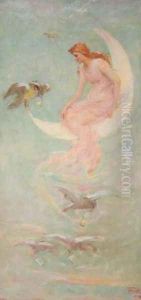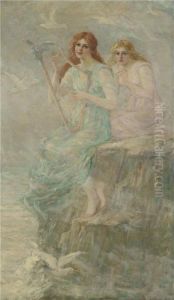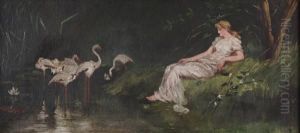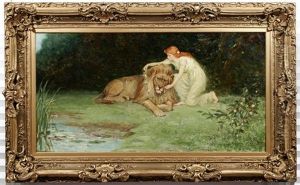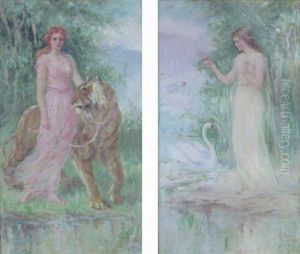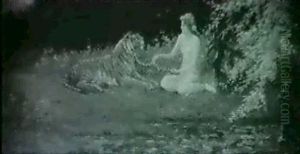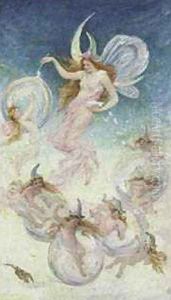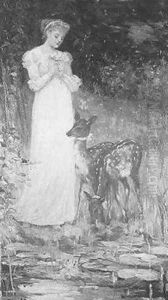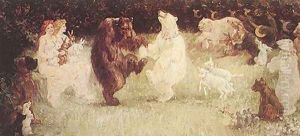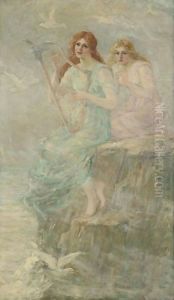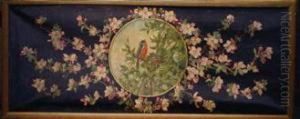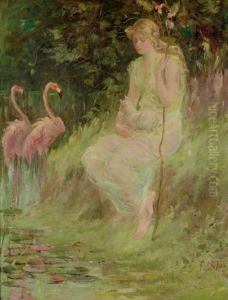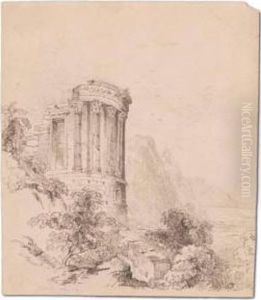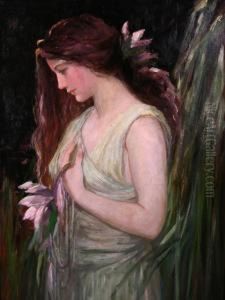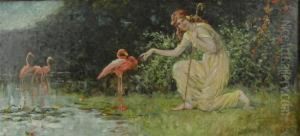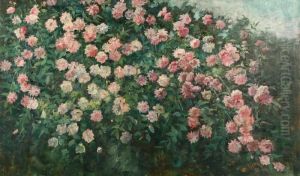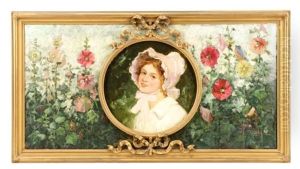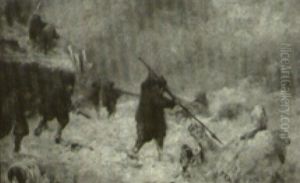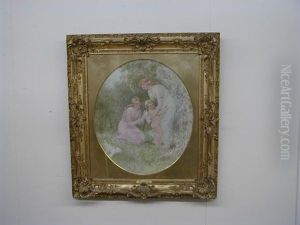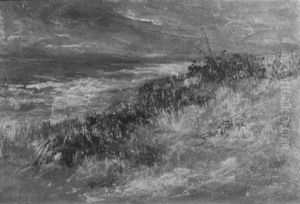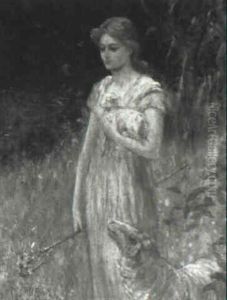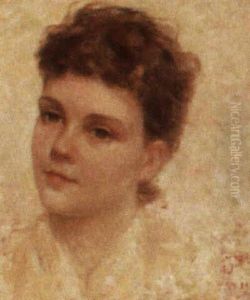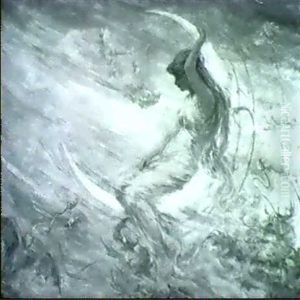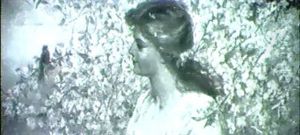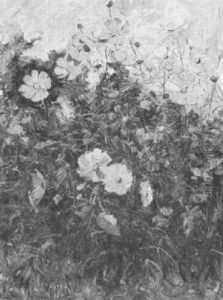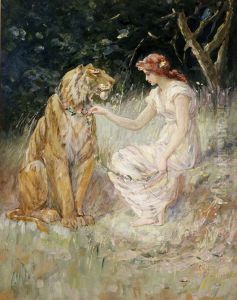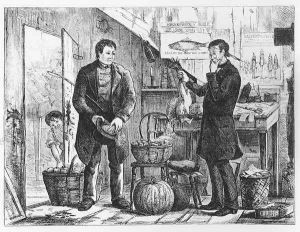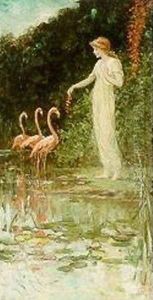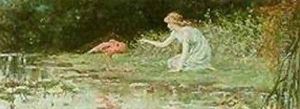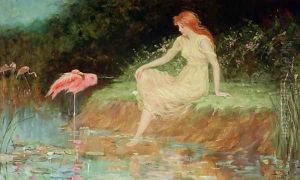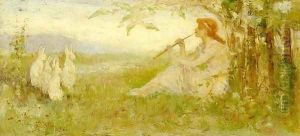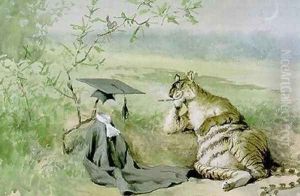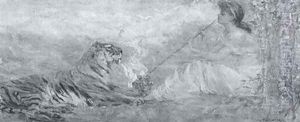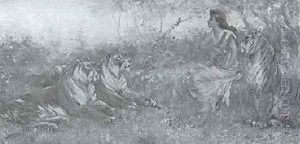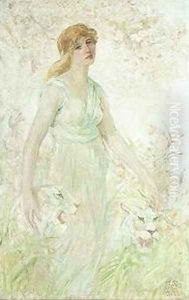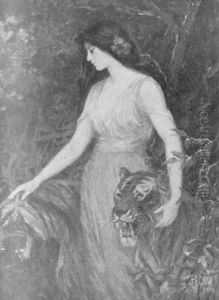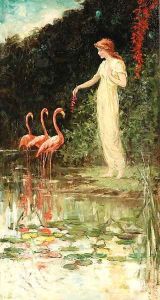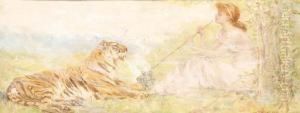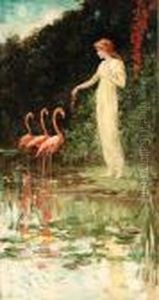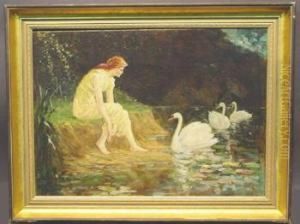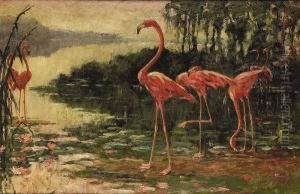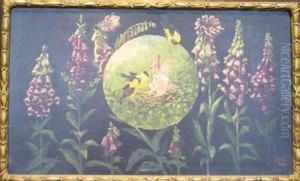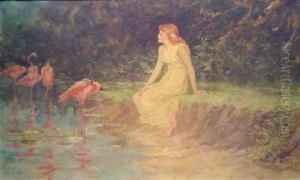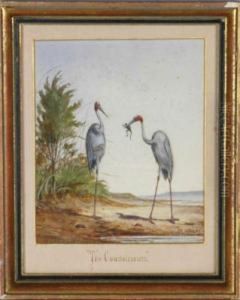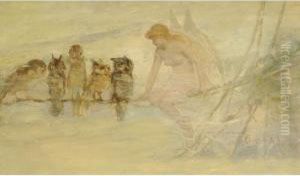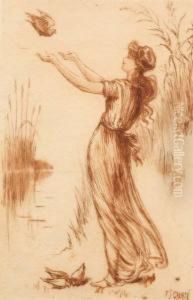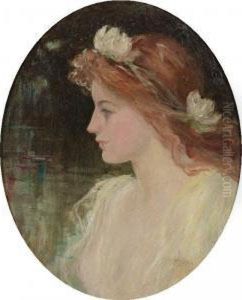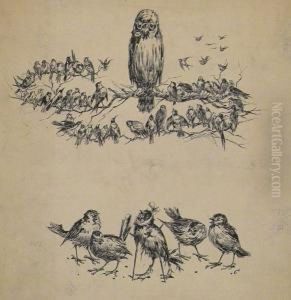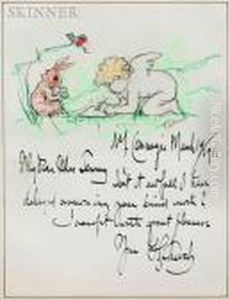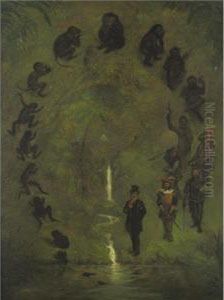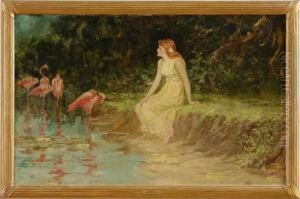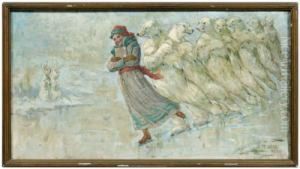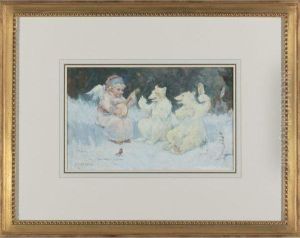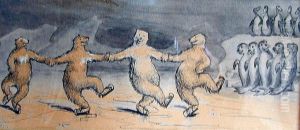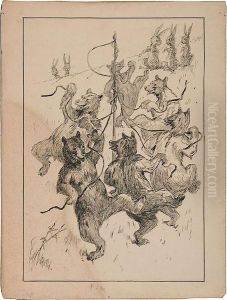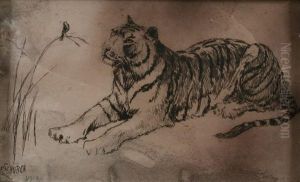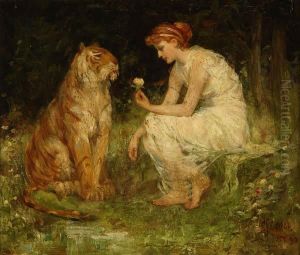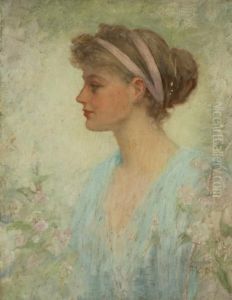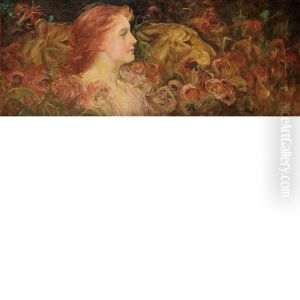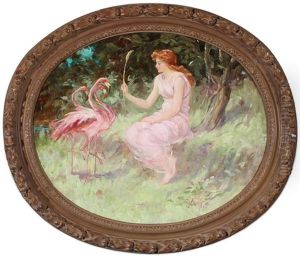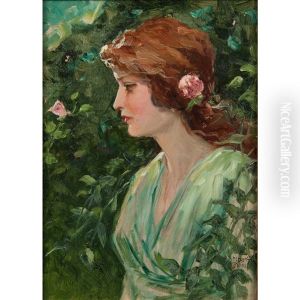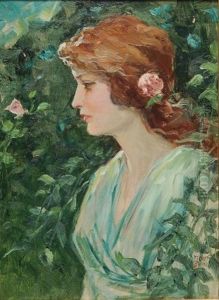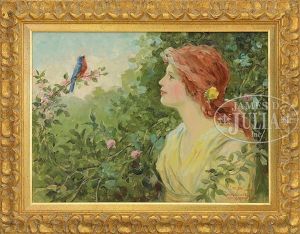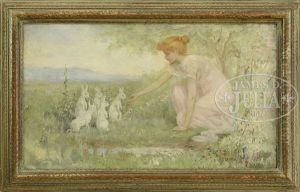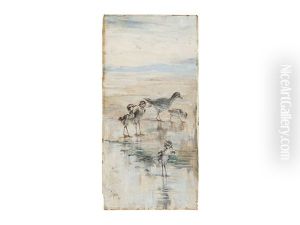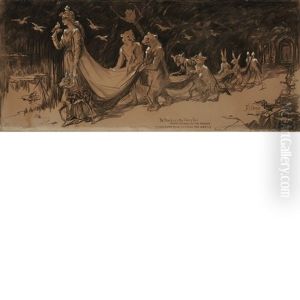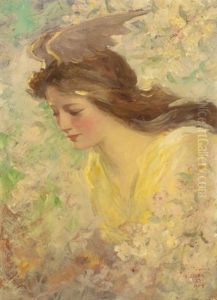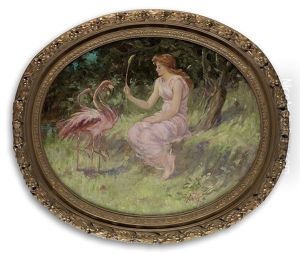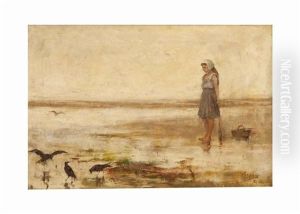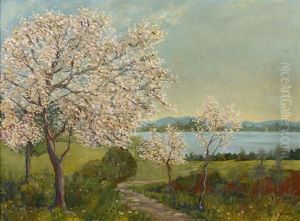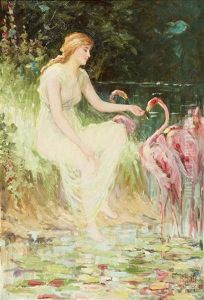Frederick Stuart Church Paintings
Frederick Stuart Church was an American artist, born in Grand Rapids, Michigan in 1842. He became renowned for his imaginative paintings, often featuring animals and fantastical scenes. Church's artistic inclinations emerged early in his life, but his path to becoming a professional artist was not straightforward.
Church served in the American Civil War, which interrupted his early artistic pursuits. After the war, he moved to Chicago and began his formal art studies at the Chicago Academy of Design. His talent quickly became apparent, and he sought to further his education by moving to New York City, where he enrolled at the National Academy of Design. There, he studied under Lemuel Wilmarth, who was a pupil of the famous French artist Jean-Léon Gérôme.
Church's style was heavily influenced by the Romanticism of the 19th century, and he was particularly adept at using this style to create a sense of fantasy and whimsy. He became well known for his ability to paint animals, both real and mythical, with a lifelike presence and an often human-like character. His works frequently contained allegorical and narrative elements, drawing viewers into the stories he depicted.
Throughout his career, Church exhibited his work widely. He showed his paintings at venues like the National Academy of Design and the Paris Salon, gaining a reputation both in the United States and abroad. His illustrations also appeared in popular periodicals of the time, such as Harper's Weekly and Scribner's Magazine, making his work accessible to a broad audience.
Church's artistic output was prolific, and he became an influential figure in the American art scene of the late 19th and early 20th centuries. In addition to his paintings, Church was also a respected teacher, sharing his knowledge and skills with a generation of upcoming artists.
Frederick Stuart Church died in 1924, leaving behind a legacy of enchanting images that continue to capture the imagination of art lovers. His work is held in various public and private collections, and he is remembered as a master of American art who blended the real with the fantastical to create a world distinctly his own.
